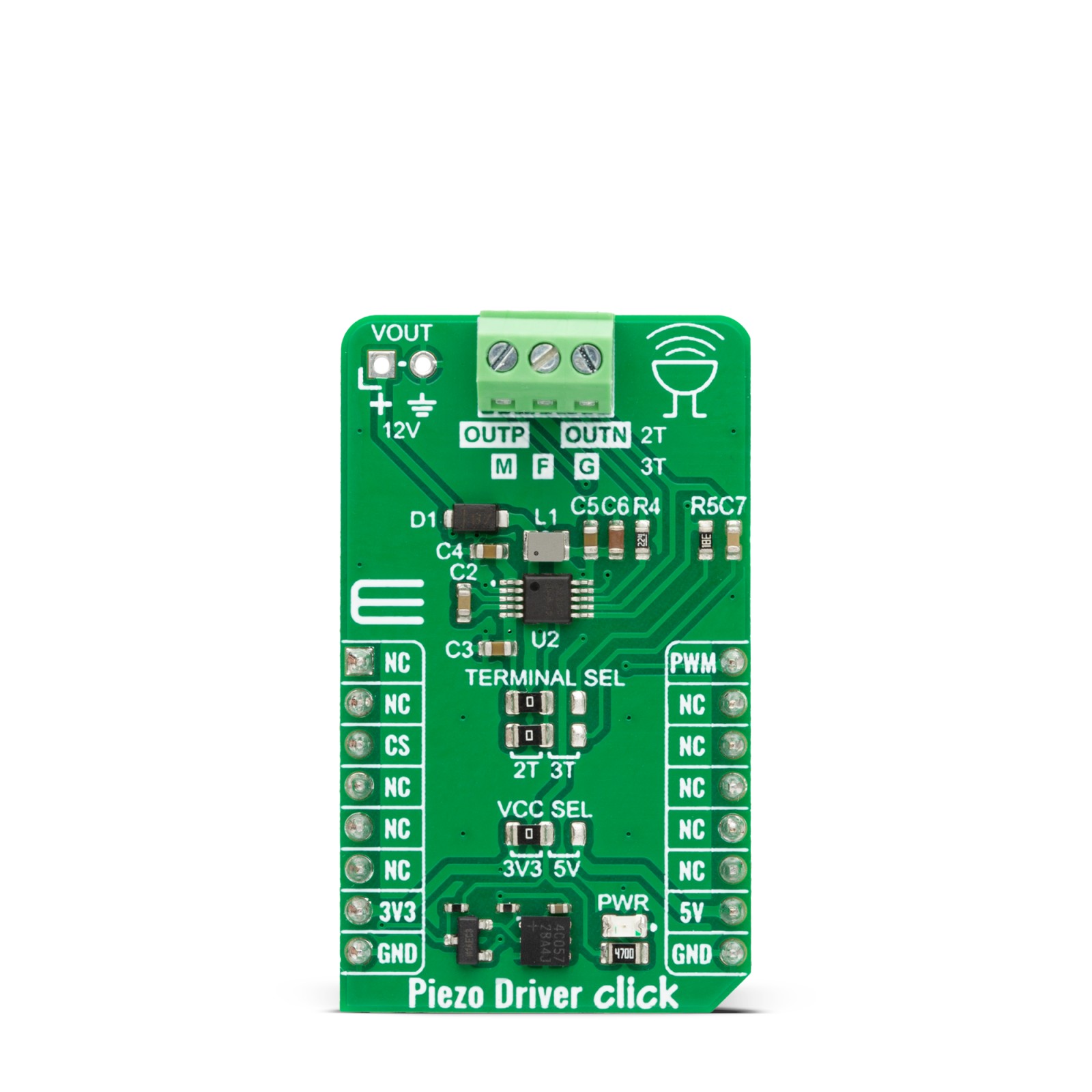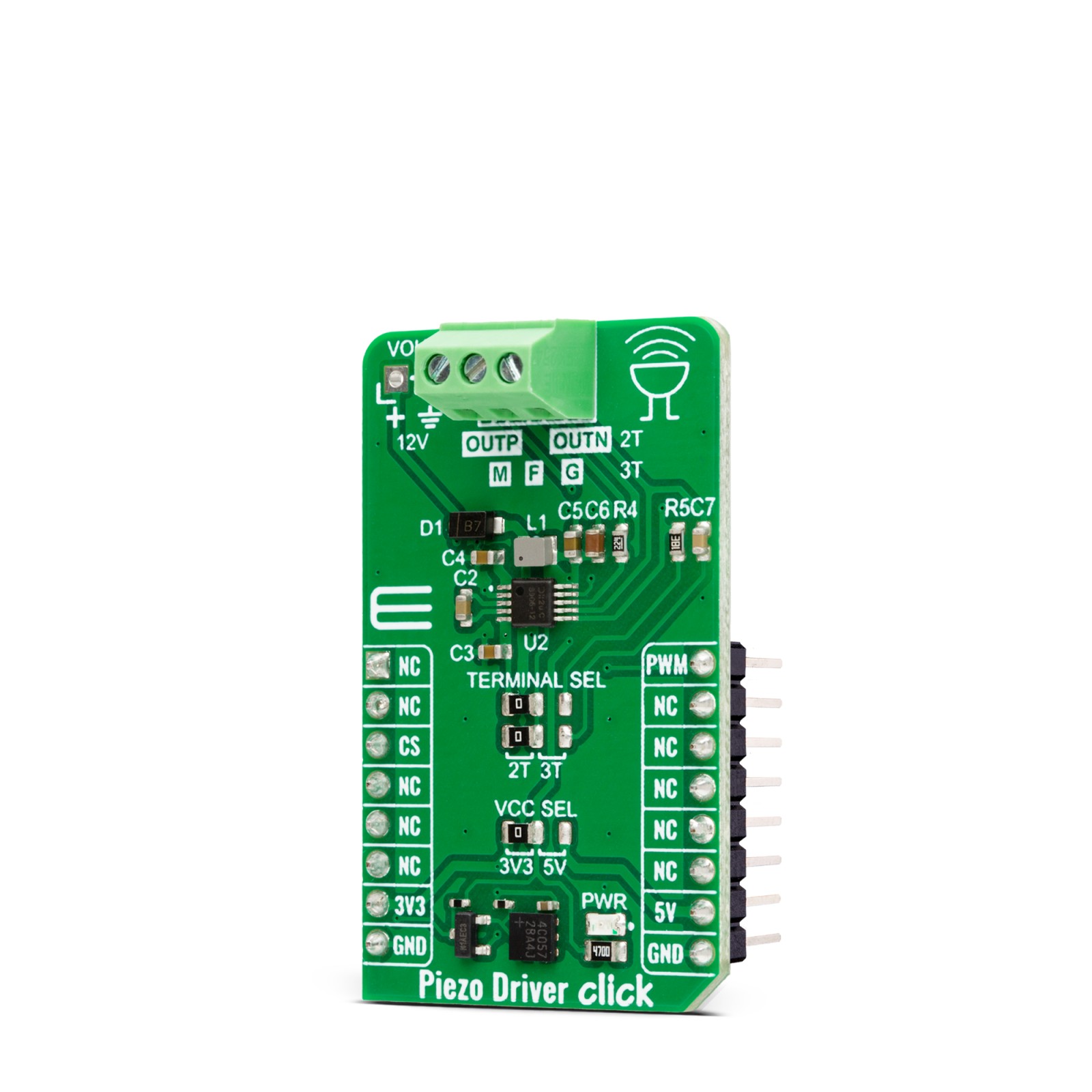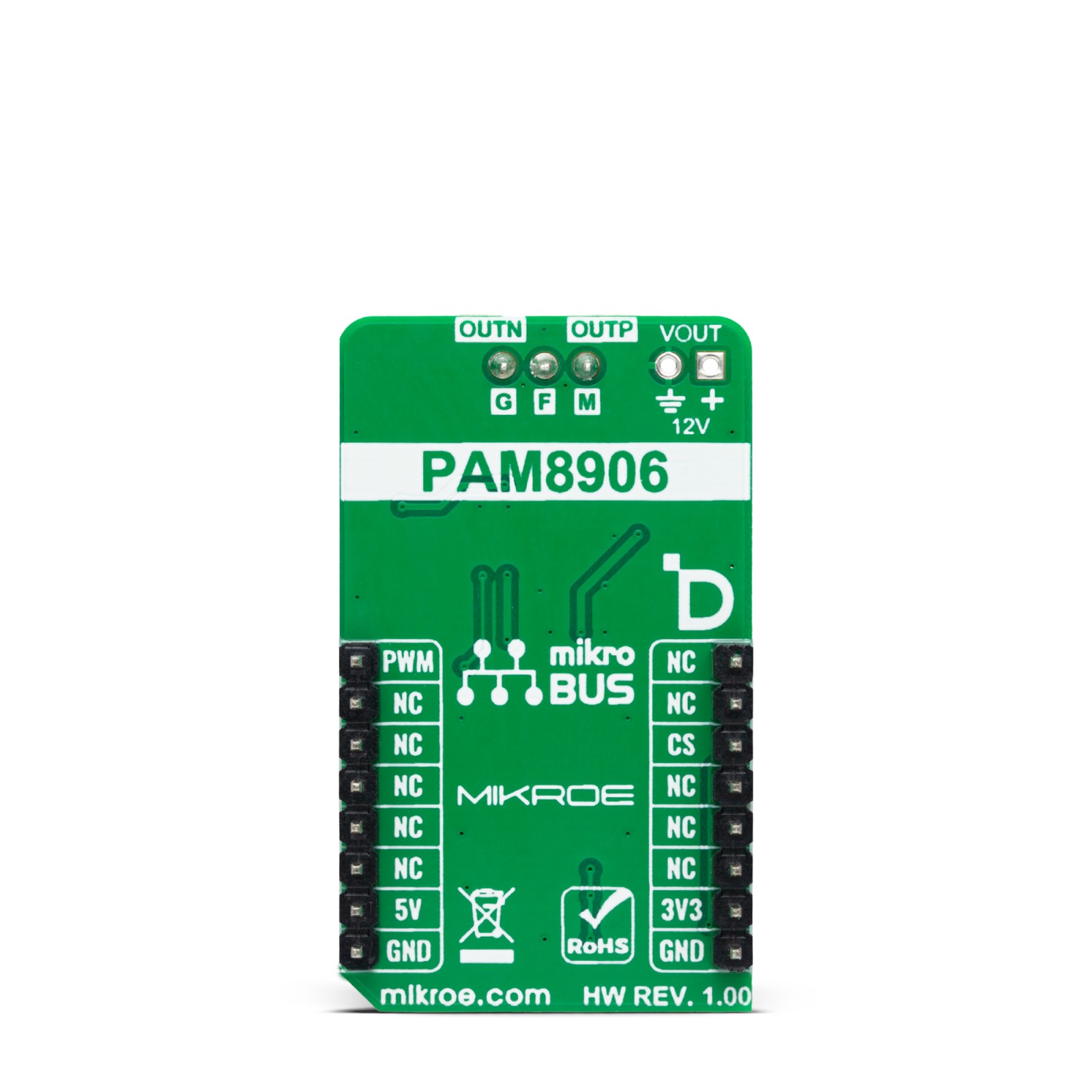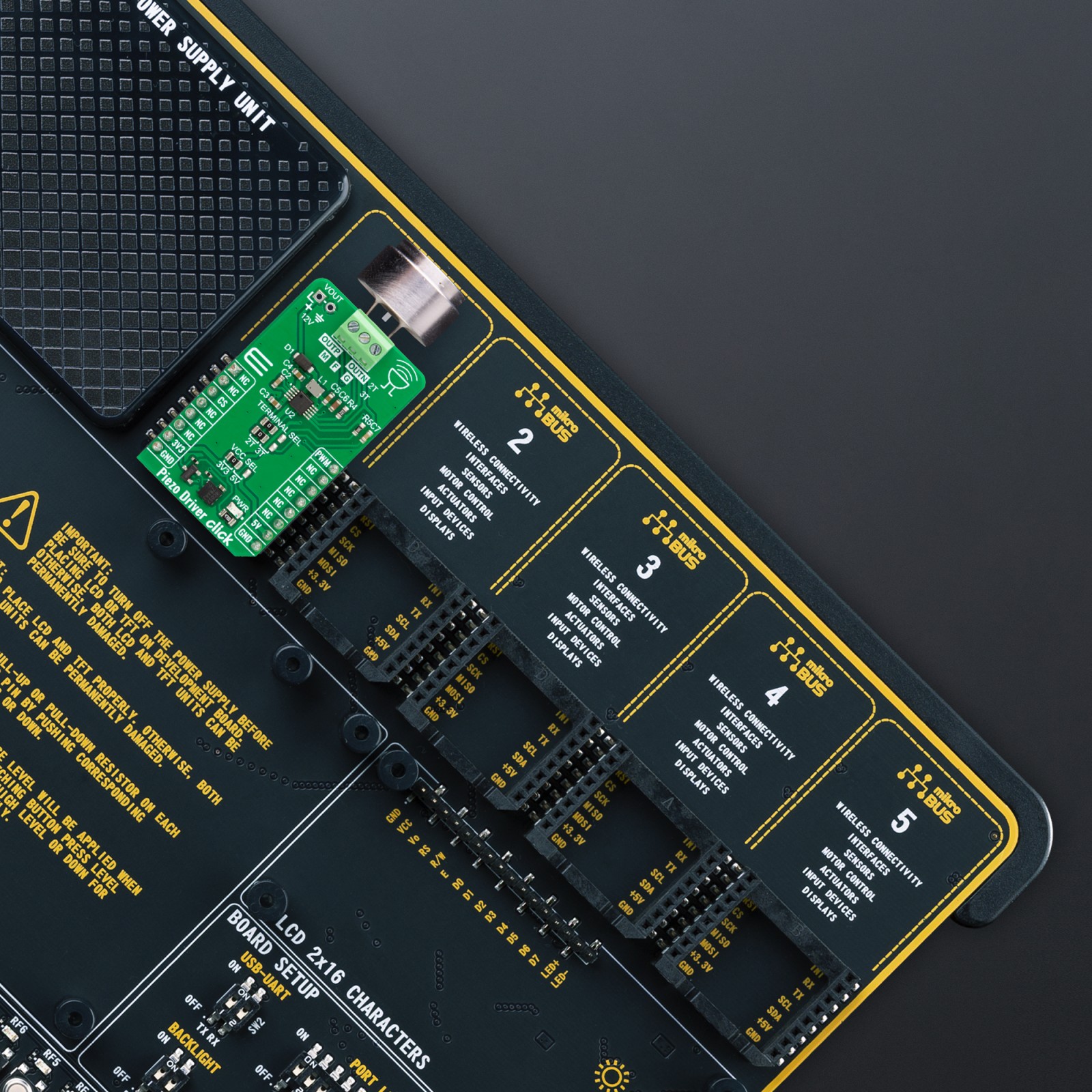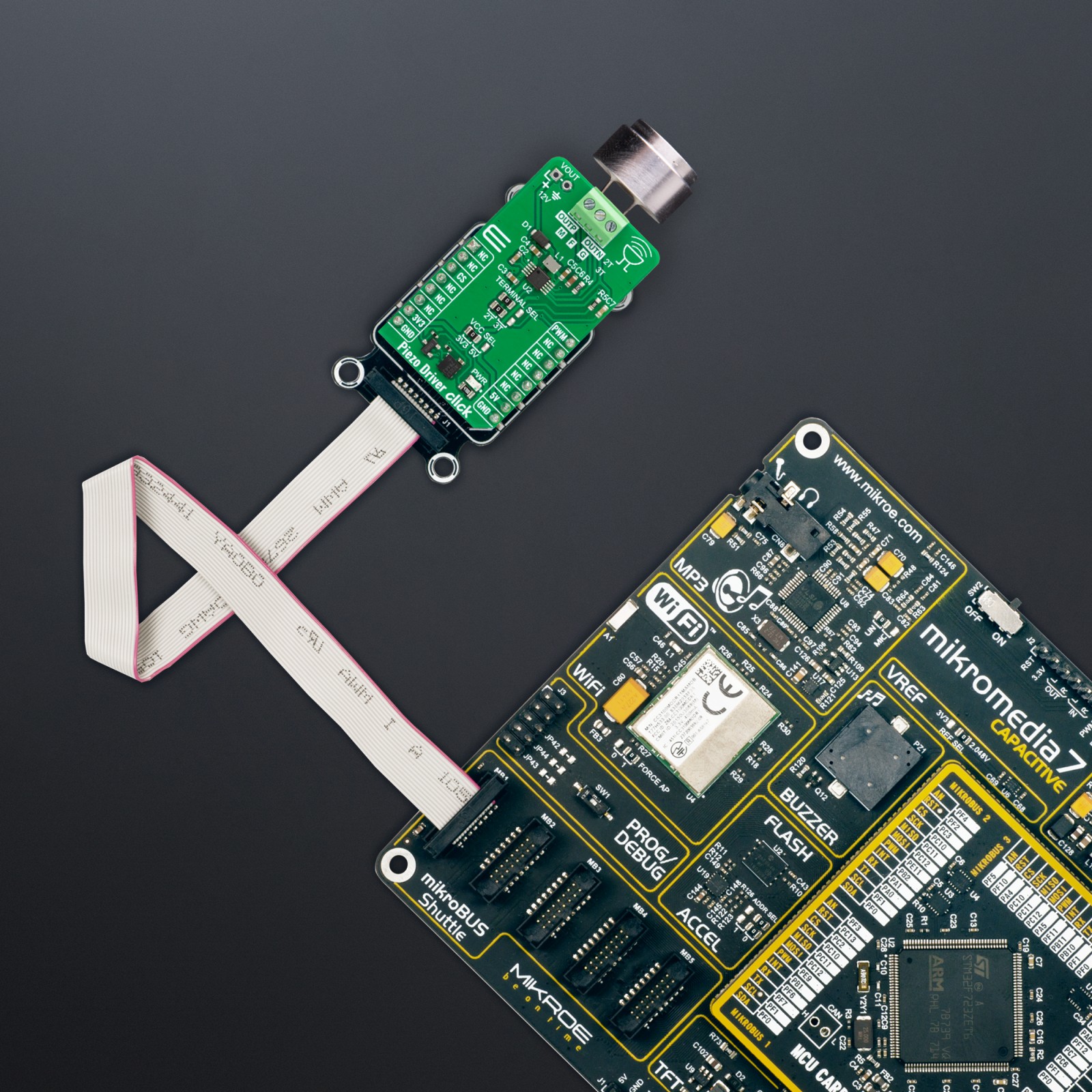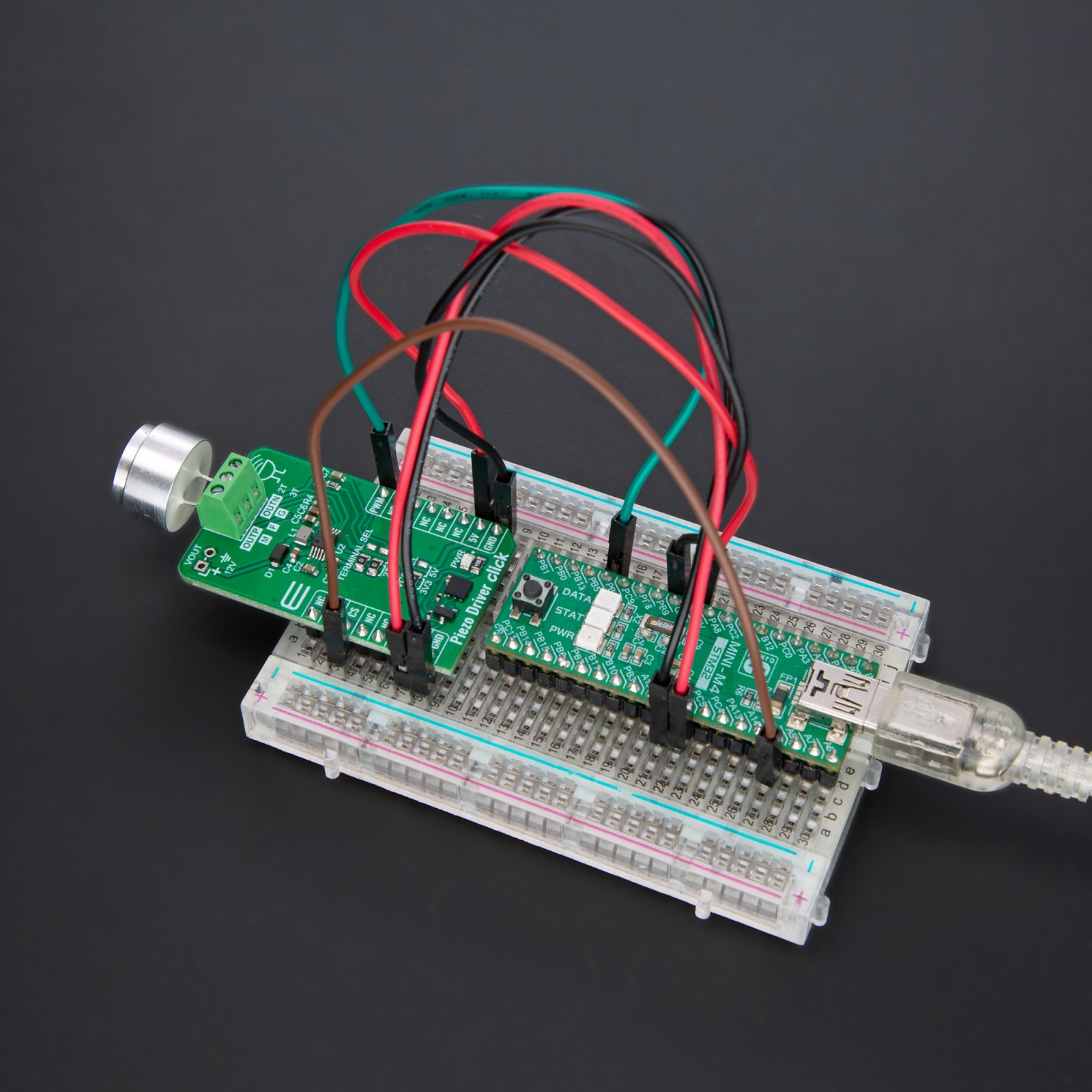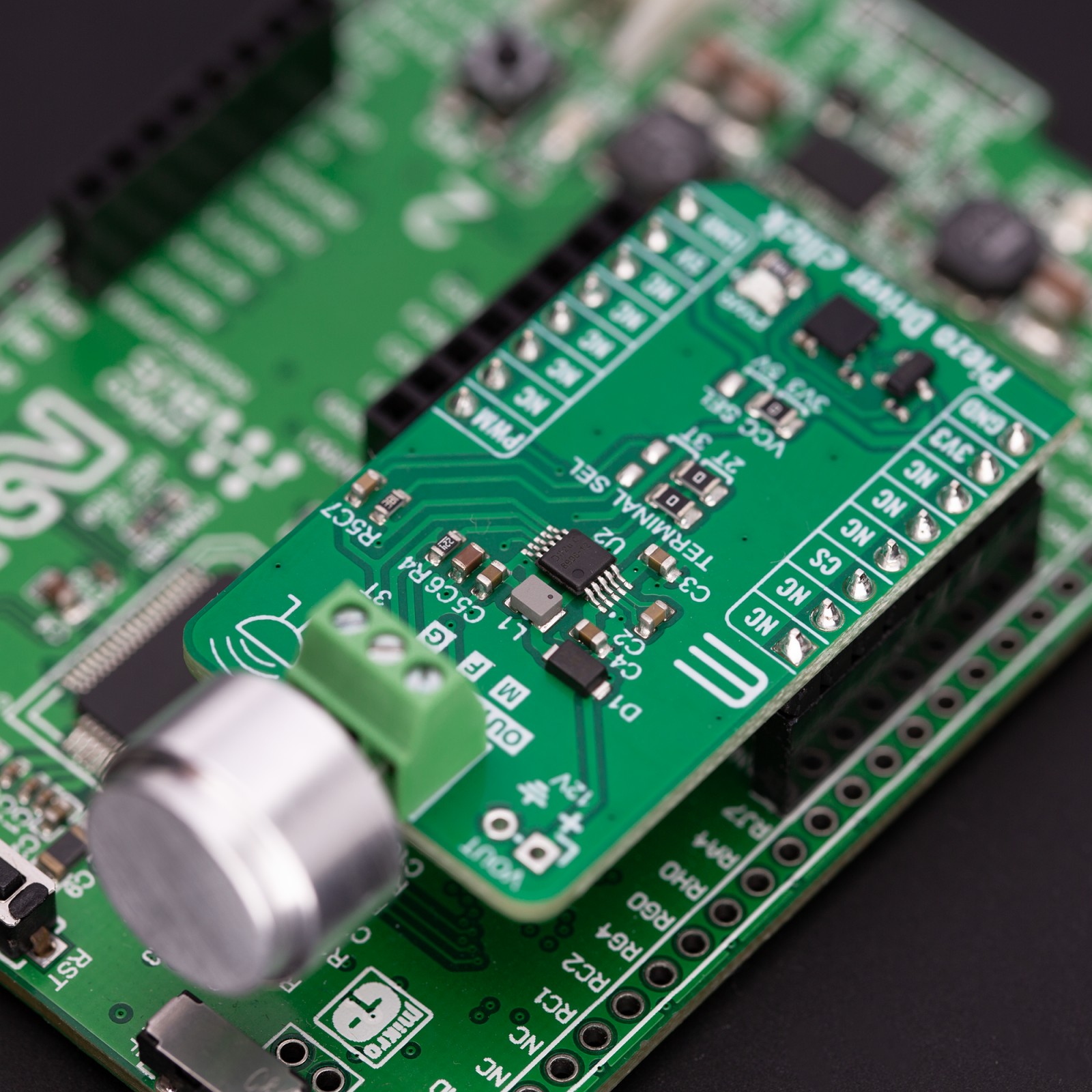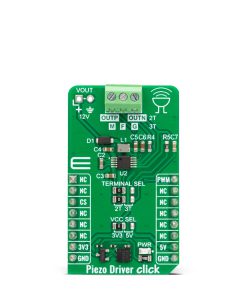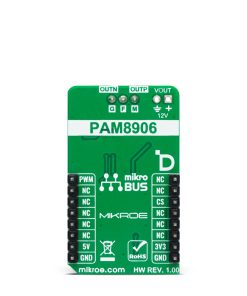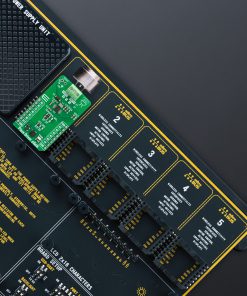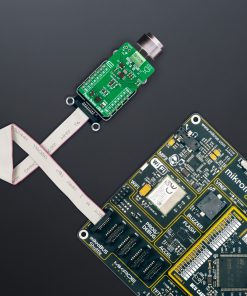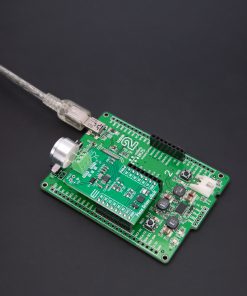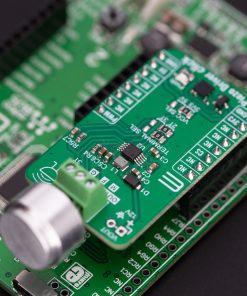Subtotal: R1,050.00
Piezo Driver Click
R260.00 ex. VAT
Piezo Driver Click is a compact add-on board that allows you easy system configuration for driving a two-terminal or three-terminal piezo sounder with few external components. This board features the PAM8906, a piezo sounder driver with self-excitation mode from Diodes Incorporated. It has a built-in boost converter capable of driving a piezo sounder with up to 12V. This way, it can provide an optimized solution with a higher Sound Pressure Level (SPL) for louder output sound and lower quiescent current, along with an auto turn-on/off feature for extended battery runtime. This Click board™ makes the perfect solution for the development of smoke, gas, water alarms, industrial security alarms, air humidifiers or ultrasonic-related piezo driver applications, security devices, home applications, and more.
Piezo Driver Click is fully compatible with the mikroBUS™ socket and can be used on any host system supporting the mikroBUS™ standard. It comes with the mikroSDK open-source libraries, offering unparalleled flexibility for evaluation and customization. What sets this Click board™ apart is the groundbreaking ClickID feature, enabling your host system to seamlessly and automatically detect and identify this add-on board.
Stock: Lead-time applicable.
| 5+ | R247.00 |
| 10+ | R234.00 |
| 15+ | R221.00 |
| 20+ | R212.68 |

 GSM Click
GSM Click 